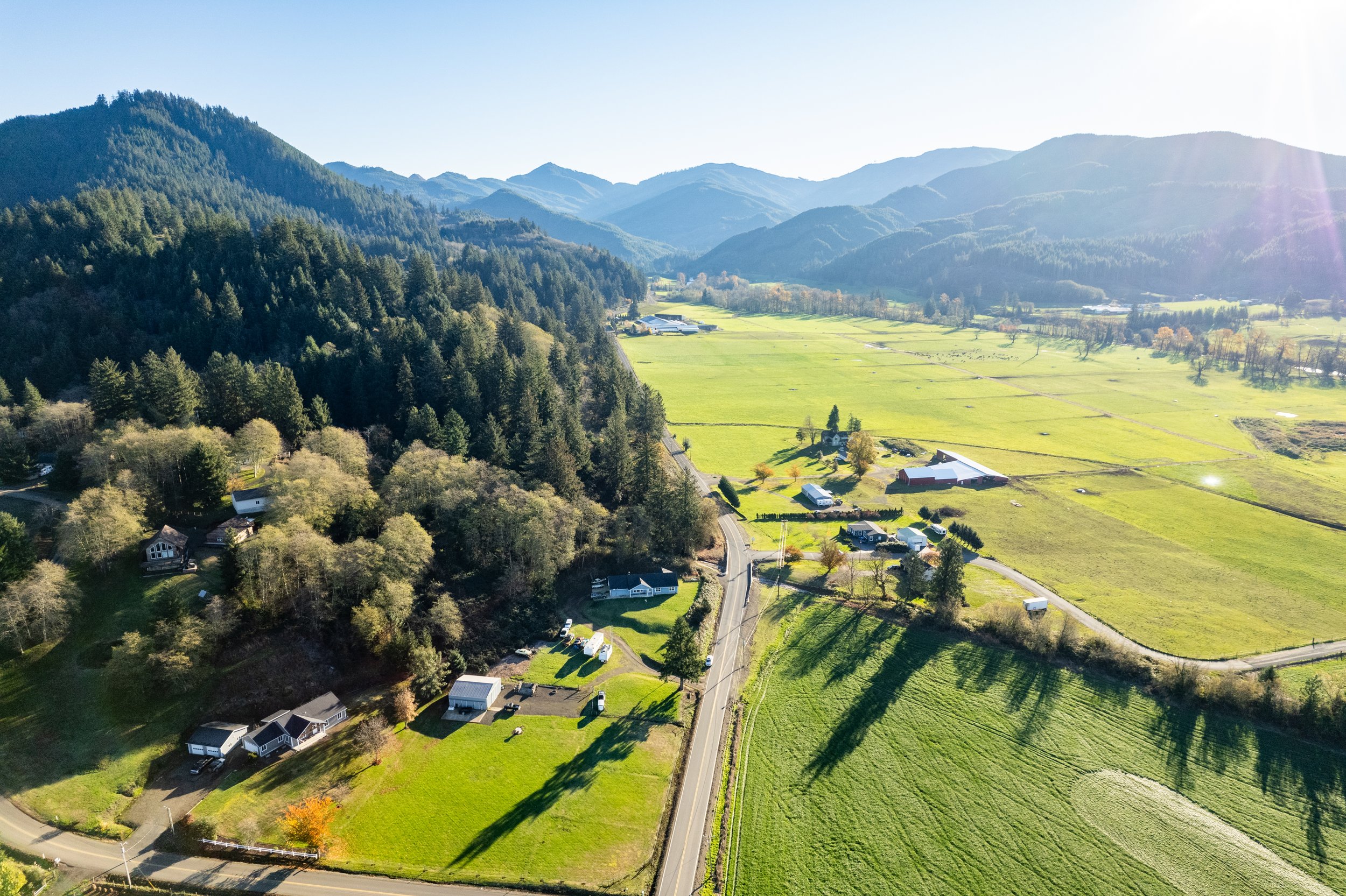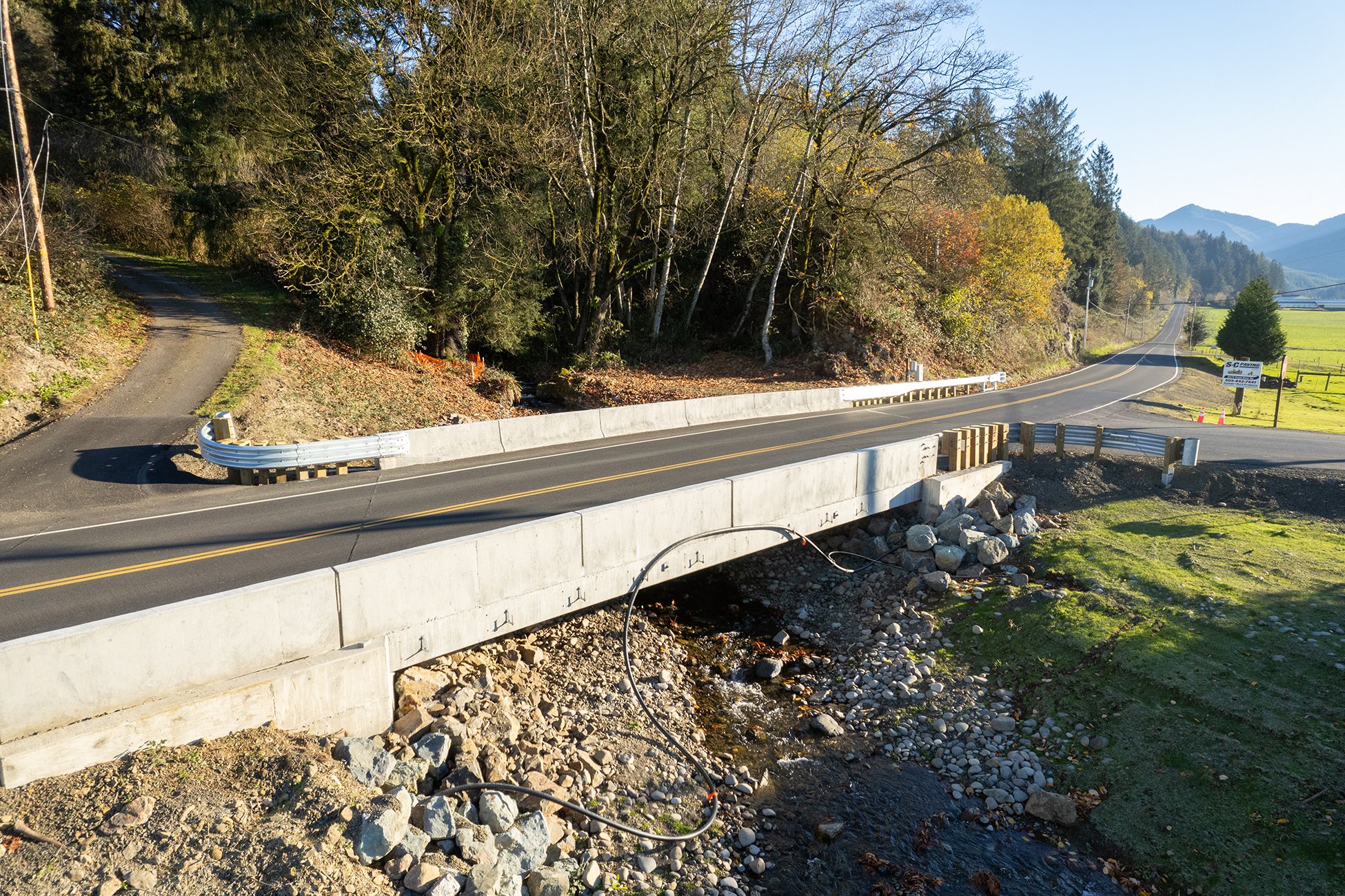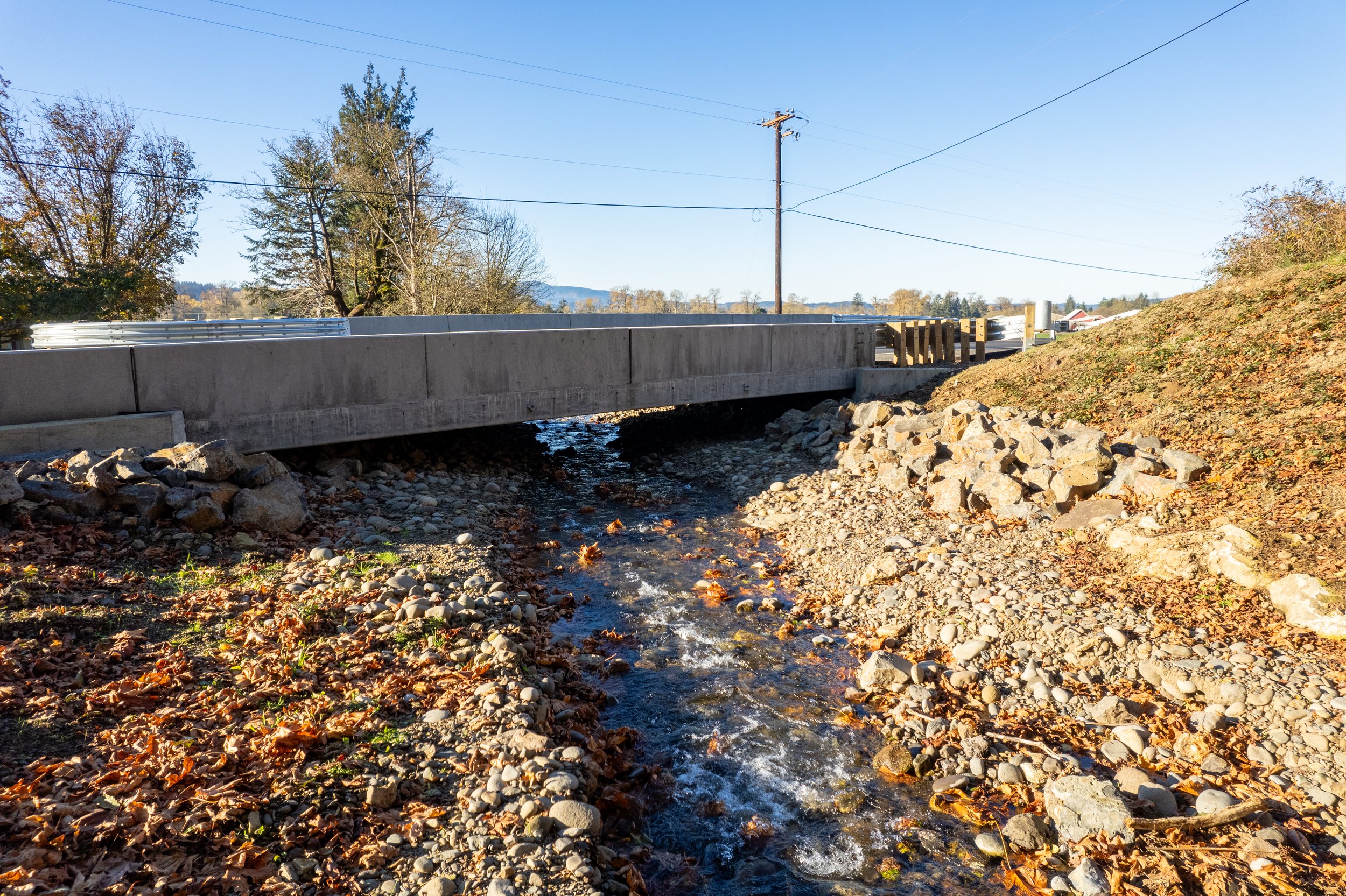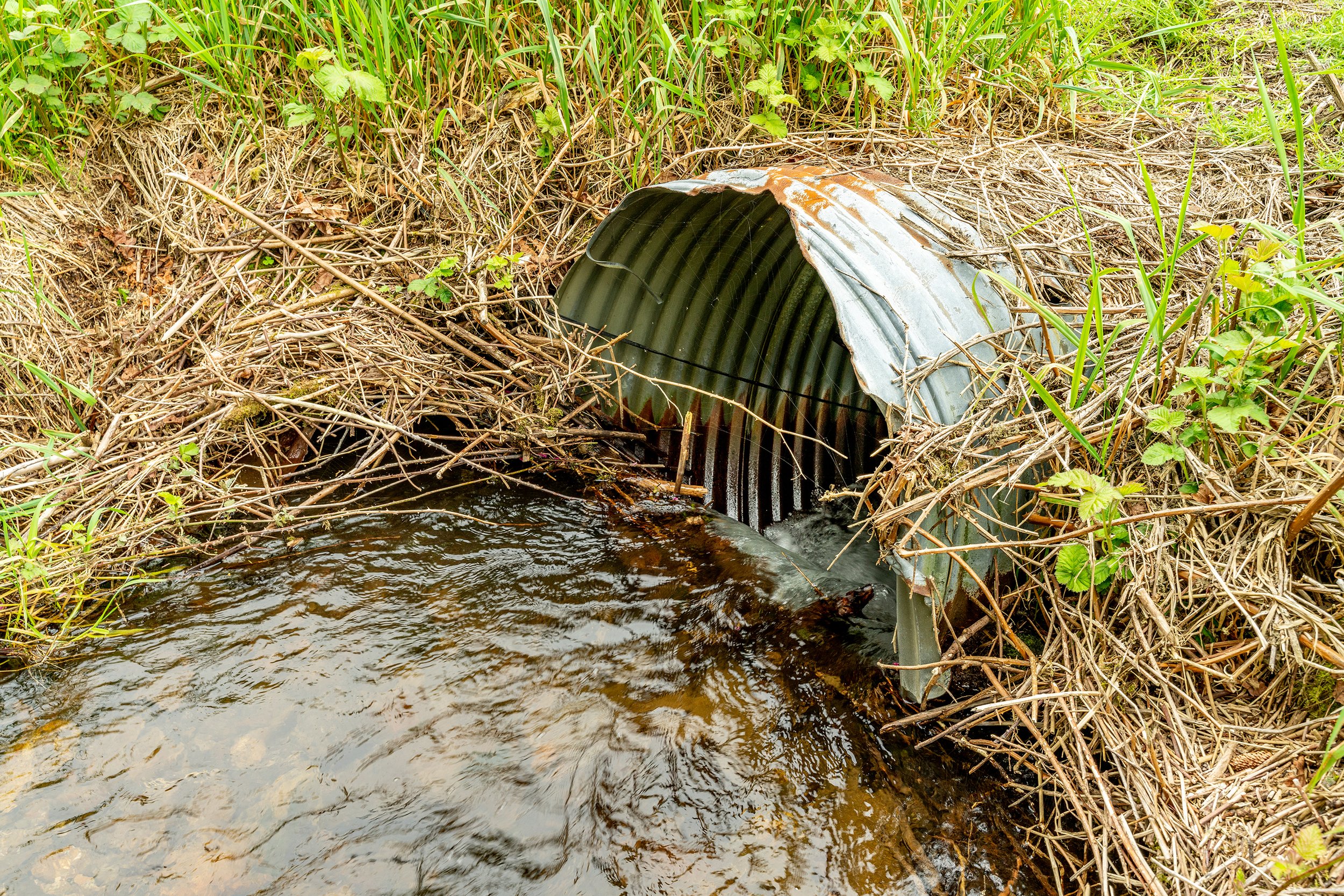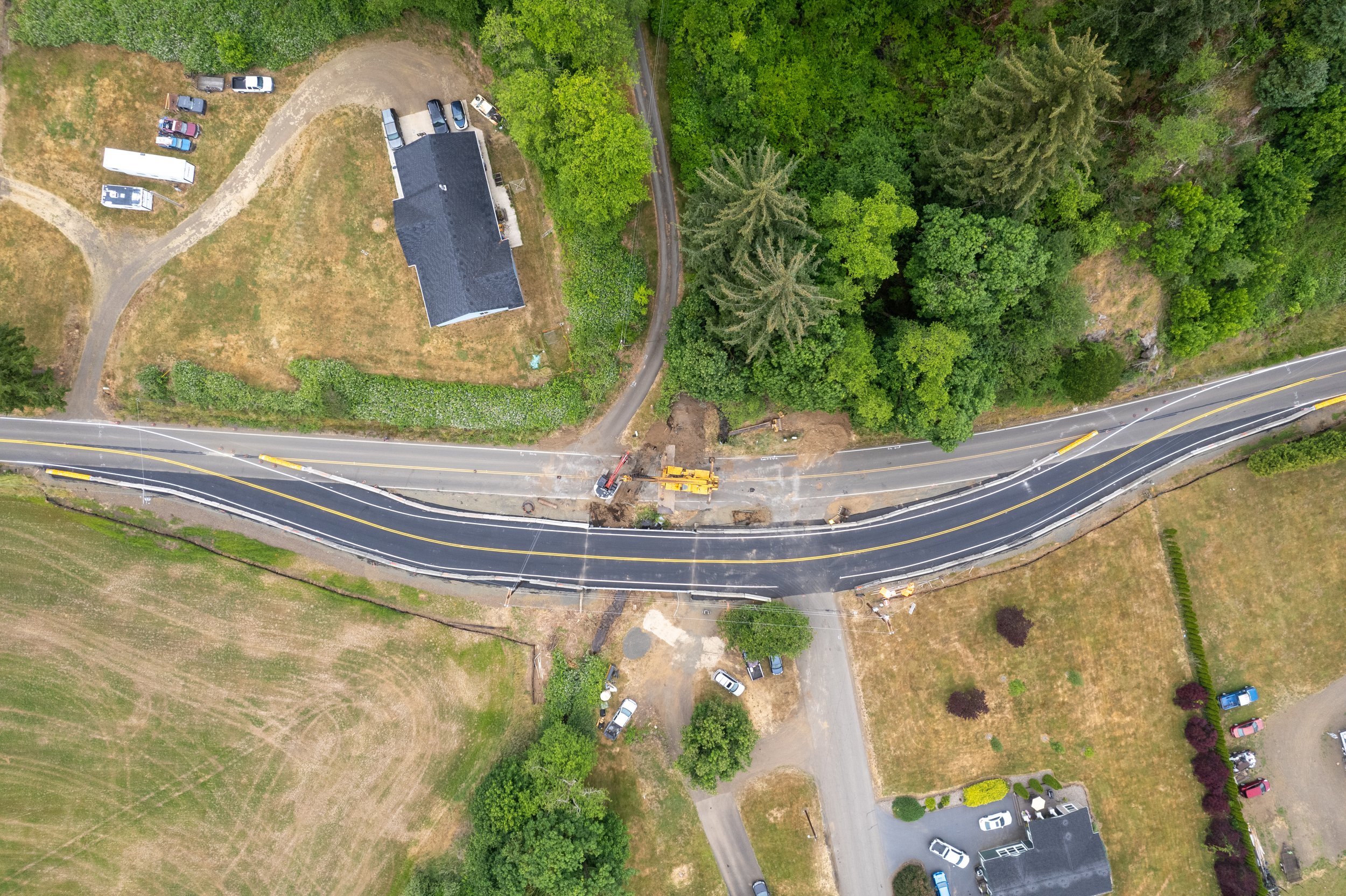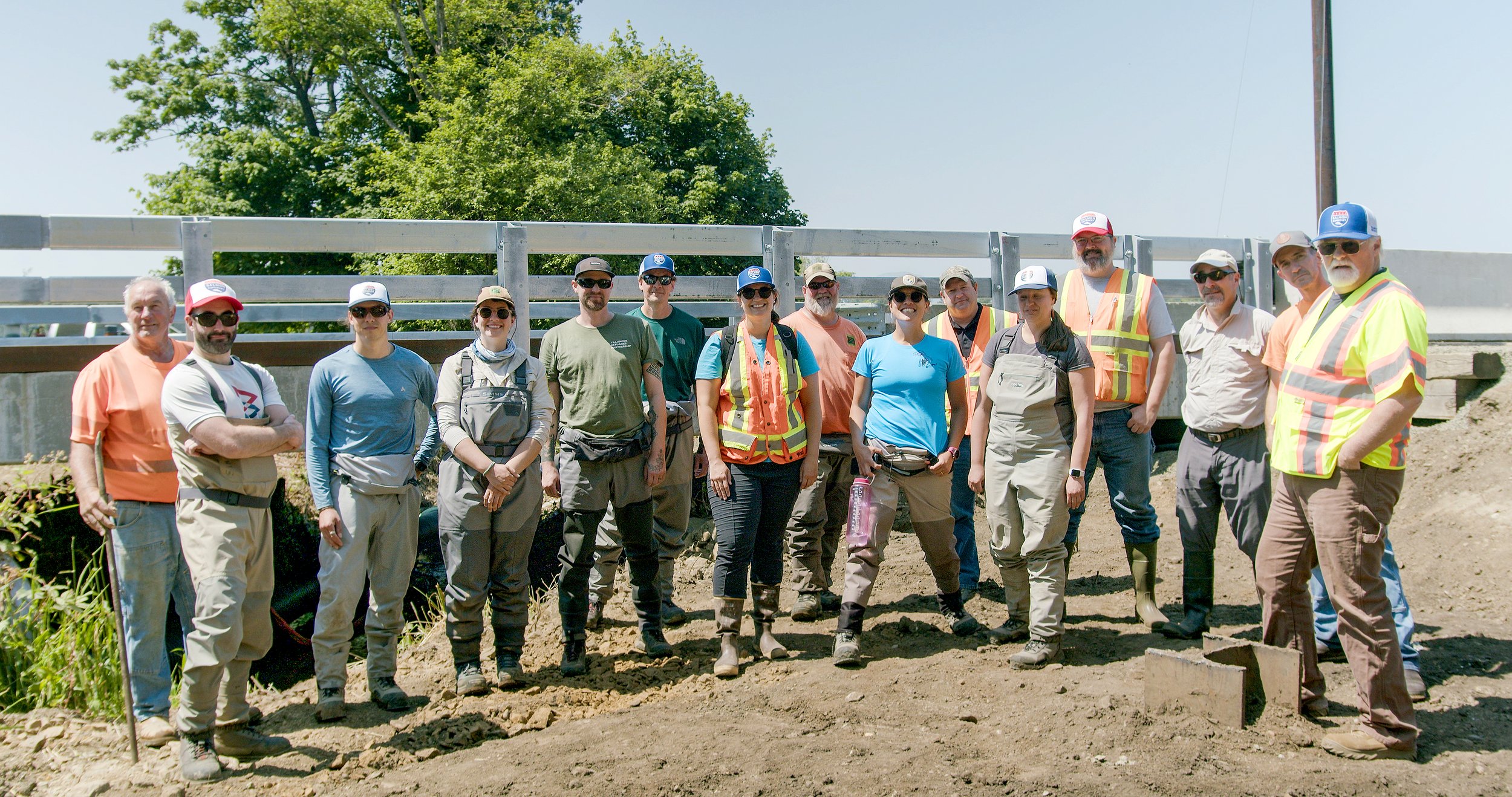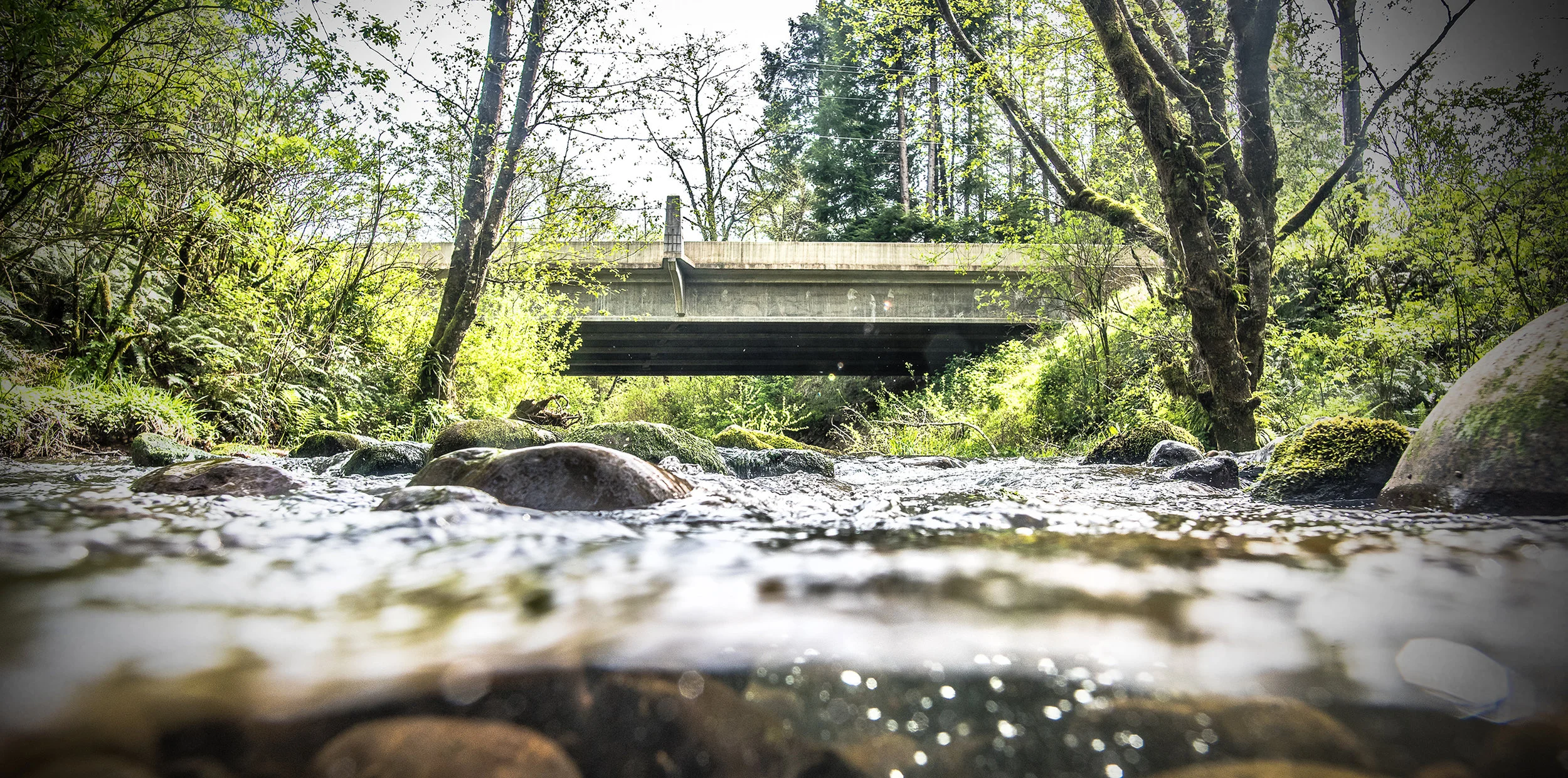Green Creek highlights
“Prior to the Green Creek restoration project, the condition of the old steel culvert had deteriorated to the point that TCPW maintenance found it necessary to stage construction equipment near the crossing for the duration of the high stream flow winter months in preparation for what was feared to be catastrophic failure of the culvert.”
Project oVerview
Started: 5/23 Completed: 10/23
This project replaced a 48” diameter steel culvert with a 25' clear span bridge designed to meet fish passage requirements. The failing culvert was a fish barrier, undersized and rusted through. The culvert is prone to plugging and flows overtop Trask River Road during high flow events. During a rain event in 2020, the Road Department prevented a road washout at this location.
This project restored 1.7 miles of upstream spawning and rearing habitat. Having this bridge in place eliminates the flooding that frequently occurred with the undersized culvert. The streambed was reconstructed using streambed simulation methodology. This technique emulates the stream’s natural bedform, including gravels and boulders, to create optimal fish habitat and passage.
Highly successful Partnership
The Green Creek project was successfully implemented with the collaboration of Salmon SuperHwy partners. Federal and state agencies along with willing private landowners combined technical skills and funding to reopen this important local road and reconnect high quality spawning and rearing habitat for Oregon’s anadromous fish.
Trout Unlimited worked closely with Tillamook County Public Works Department, Oregon Department of Fish and Wildlife, and US Fish and Wildlife Service, US Forest Service, Oregon Watershed Enhancement Board, National Oceanic and Atmospheric Administration.
Species + Infrastructure
This culvert was a full barrier to juveniles and a partial barrier to adults, depending on flows. Downstream of the Trask River Road culvert along Green Creek, was planted in 1997 resulting in today's mature riparian cover and shading. The Oregon Department of Environmental Quality rates the lower Trask River as temperature impaired for rearing, migration, and spawning criteria. Because Green Creek is a tributary that enters the lower Trask River and it has dense riparian cover, it offers essential cold water refugia for all fish in the Trask River during high summer water temperatures. Anadromous salmonid fish species occurring in the Trask Watershed include spring and fall Chinook Salmon, Coho Salmon, summer and winter Steelhead, and sea-run Cutthroat Trout. Resident Cutthroat Trout also occupy most of the streams. Resident Brook and/or Pacific Lamprey likely occur in the watershed but are not well-documented.
Trask River Road is the sole access to this area and a failure at this culvert would cut off access to numerous residences, state and industrial timber land, and recreational opportunities such as parks, camping, fishing and hunting. Replacing this culvert will eliminate a public safety hazard and reduce maintenance costs for the County.
Benefits
Trask River Road (single road access to area)
• Improved public health and safety
• Maintains emergency responder access
• Maintains wildland fire access
• Maintains business access
• Eliminates a frequent flooding hazard
Green Creek
• 1.7 miles of habitat reconnected
• Unimpeded passage for multiple fish species and
access to spawning and rearing habitat
• Natural stream processes restored with improved
sediment and large wood transport
cost + funding
TOTAL PROJECT COST: $ 1,500,000 + $28,000 in kind
USFWS: $63,000 + $10K in kind technical assistance + federal compliance
USFS: $61,000
TCPW: $120,000 + $18k in kind, technical assistance + oversight
OWEB: $495,000
ODFW: $127,000
NOAA: $709,000
Partners
Trout Unlimited, Tillamook County Public Works Department, Oregon Department of Fish and Wildlife, and US Fish and Wildlife Service, US Forest Service, Oregon Watershed Enhancement Board, National Oceanic and Atmospheric AdministrationFarline Bridge Construction, Inc.
Contractors
Farline Bridge Construction, Inc.
